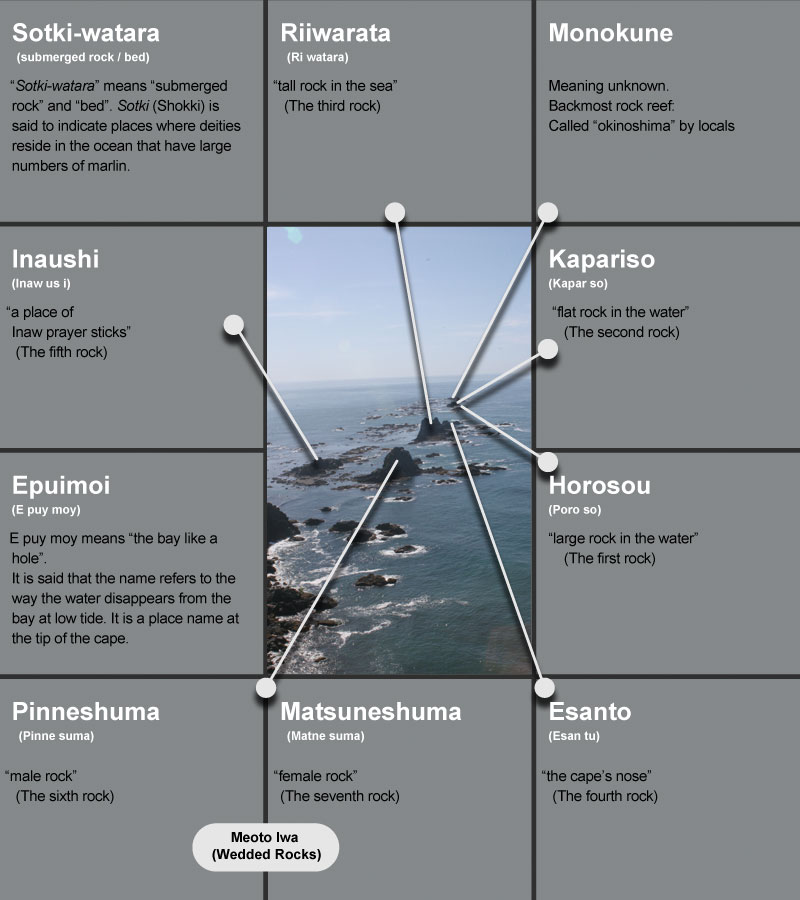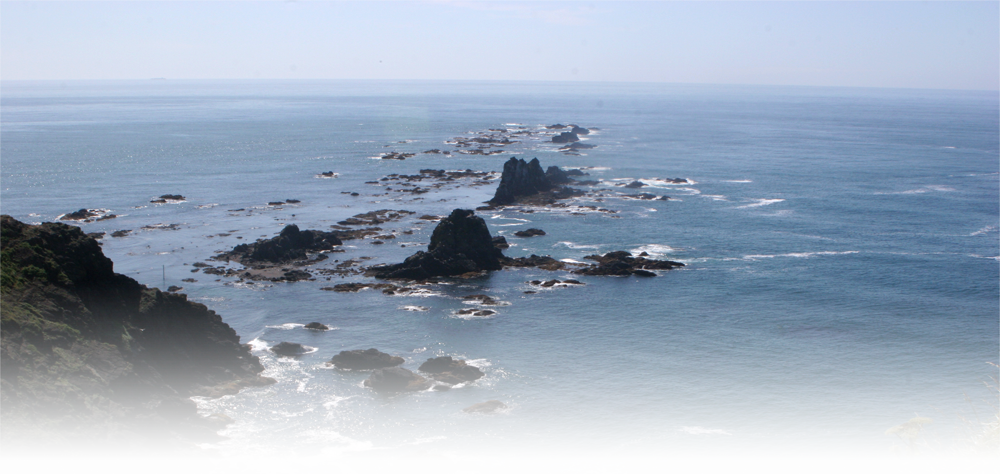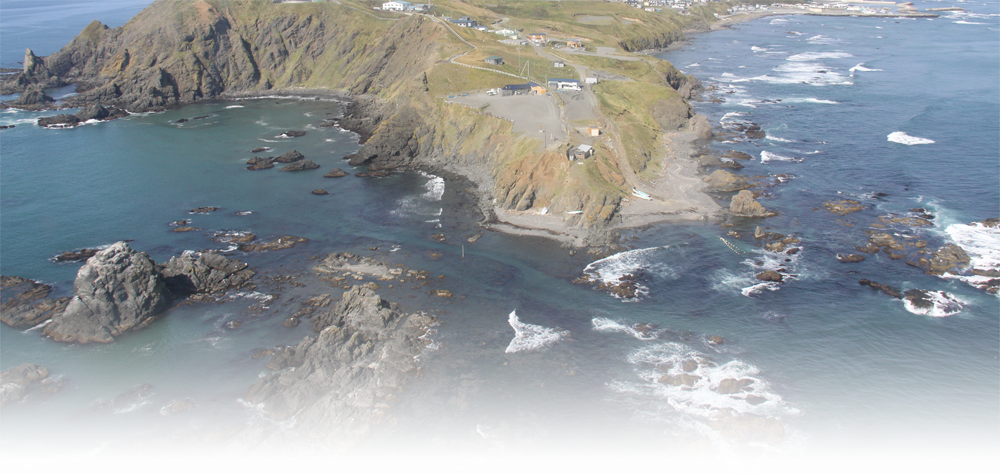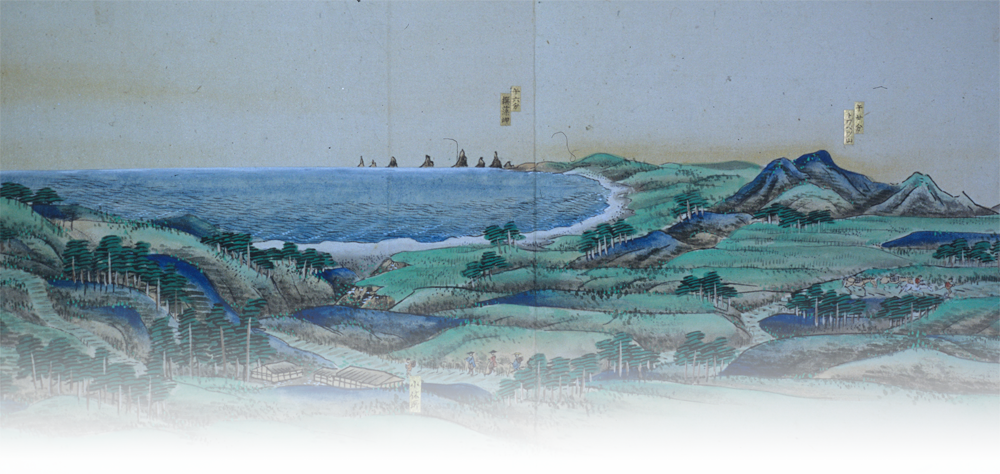
The Ainu are one of the indigenous peoples of Japan and have established their culture mainly in Hokkaido. Making a livelihood hunting, fishing and gathering vegetables and plants, they have lived in harmony with nature in the northern country. Ainu believe that every deity (kamuy) has a role to play in the world and disguise themselves as animals, plants and parts of nature to fulfill their roles. It is thought that humans and deities live in support of each other within nature, and that humans are living as a part of nature themselves. The spirit of the Ainu people, who have lived within nature, offers us living in the current material culture valuable insight on how to live in harmony with the natural world.
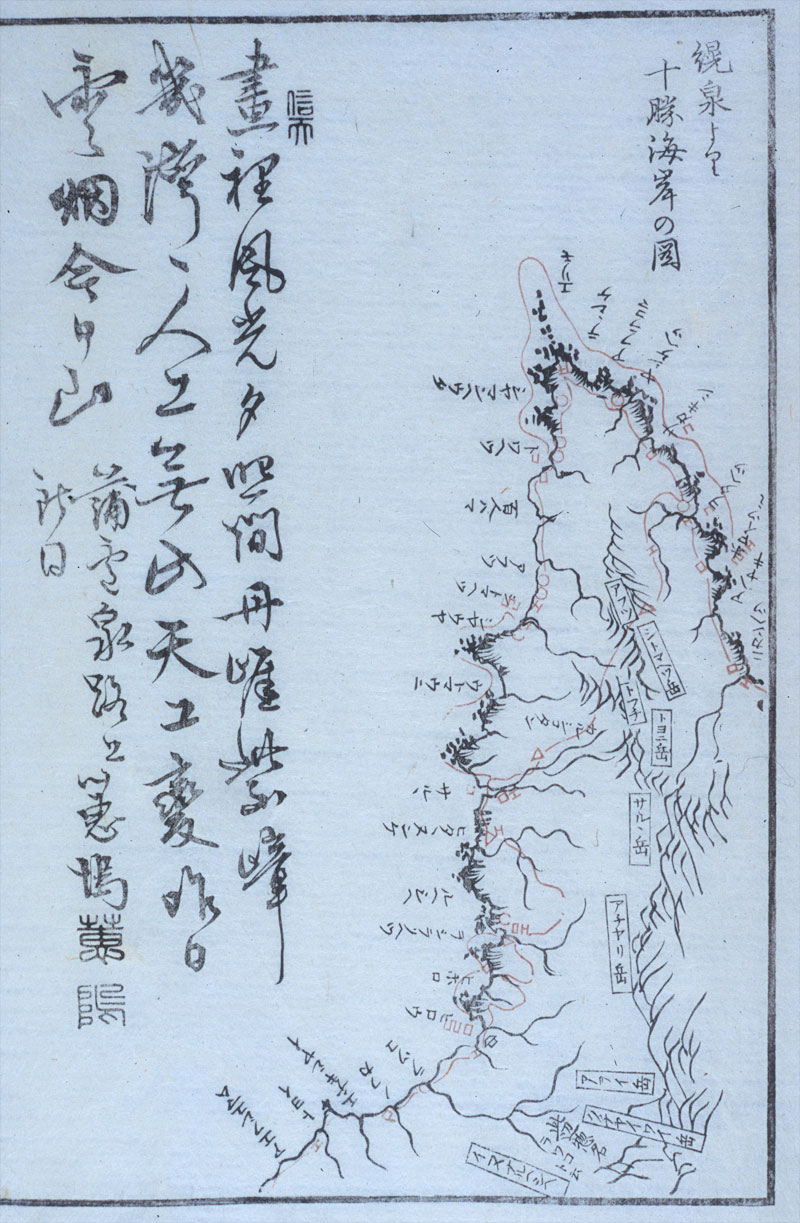
Higashi Ezo Nisshi (Hokkaido University Library collection)

During the Edo period (1603 – 1868), Japanese visitors to Ezo (Hokkaido) had to either travel by sailing ship (kitamae-bune) or by foot along the coast. Matsumae served as the gateway for visitors from Honshu. Cape Erimo was the first challenging spot when heading east into the Pacific Ocean from Matsumae. Because of strong winds and high seas, these waters were particularly known as dangerous among the ships and travelers heading to Kushiro, Nemuro and the Kuril Islands at this time. Travelers such as government officials and mariners entrusted navigation to the Ainu people who lived in Hokkaido and were well versed in the region’s geography and weather. Many writings exist that tell of offering prayers together with the Ainu people for a safe voyage.
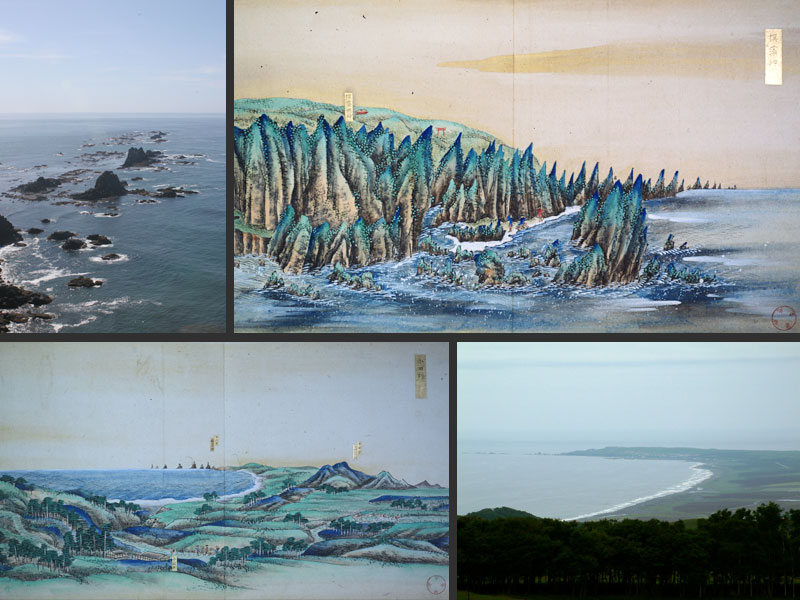
There are many descriptions of Cape Erimo by travelers to the region during the Edo Period.
- “The Ainu use Inaw prayer sticks and offer sacred sake at Cape Erimo.” (“Ezo Nikki” by Kenji Kimura, 1799)
- “Much kombu can be found growing at Monokune (a rock located at the tip of the rocky reef area) but from the old days the Ainu have not harvested it, considering it to be Erimo’s whiskers.” (“Bogo Tozai Ezo Yamakawa Chiri Torishirabe Nisshi” by Takeshiro Matsuura, 1858)
These writings, and others, show us that even though the Ainu were forced to rely mainly on producing kombu, they did not harvest it at sacred sites. This shows us that Cape Erimo is a place sacred to the Ainu.

For the Ainu people, the kamuy exist in natural geological formations and phenomena. Place names were given based on the unique geological formation or natural phenomenon of that particular location. For example, many places in Hokkaido, such as capes and other geographical formations that are protruding outward, have the name en-rumu, from the Ainu world “en-rum” meaning “protruding object” or “head”. This word is also the origin of “erimo”.

